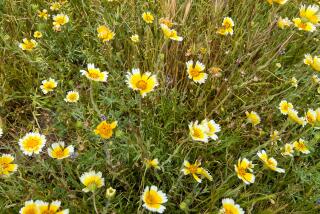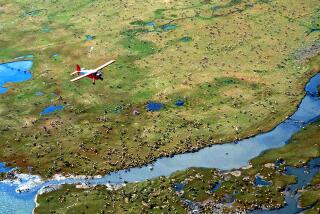Sprawl Reaches the Wilderness
- Share via
SITKA, ALASKA — We live in an era of sprawl. The waistlines of our cities bulge relentlessly, suburbs devour the surrounding countryside and patchwork roads carve up the woodlots. But does our epidemic of sprawl really end at the margins of cities and towns?
To create sprawl you need a road, and our expanding network of roads is spreading ever farther into the hinterlands. Consider the national forests. Largely because of clear-cut logging, mining and other developments, we already have about 400,000 miles of roads in U.S. public forests, enough to circle the globe 15 times. We’re adding more miles every day, roads that plunge a stake into the heart of America’s most beautiful wildlands, roads that turn our natural treasures into industrial developments.
I live in the Tongass National Forest, on the outer coast of southeastern Alaska, and even here we feel the impending sprawl of roads. This is by far the largest, wildest, most spectacular of all our national forests: a thrall of mountains and glaciers, lakes and valleys, islands and fiords. A landscape so beautiful that you sometimes turn away from it, wringing its brilliance from your eyes, as if you had stared into the sun. If it were located in any other state, the Tongass probably would not be a national forest at all. It would be one of our most celebrated national parks.
Yet, some parts of the Tongass resemble suburban New York or the outskirts of Los Angeles. A snarl of logging roads, totaling more than 4,000 miles, worms along the mountainsides and up into once wild valleys. Over the next five years, the U.S. Forest Service proposes adding another 450 miles in the Tongass. This is 80% of all new roads to be built in the previously roadless areas of our country’s national forests. Where these roads go, the clear-cuts follow.
The Tongass National Forest is home to a lavish and diverse community of wildlife: wolf, wolverine, grizzly bear, black bear, mountain goat, moose and almost 300 bird species, including one of the world’s largest concentrations of bald eagles. From high overlooks, the Tongass encompasses tier beyond tier of serrated peaks, with alpine meadows sprawling in the swales and the largest temperate rain forest in the world stretched across the lower slopes. But there are also raw, eroding stumplands, where stands of Sitka spruce and yellow cedar, the oldest among them 500 to 1,500 years old, have given way to the wilderness equivalent of parking lots.
A few days ago, I drifted in my skiff within 30 yards of an enormous, hump-shouldered grizzly bear while he chomped on grass that reached the ample sag of his belly. He wasn’t much bothered by my boat, but a new road would be a different story. These great bears are extremely vulnerable to habitat disturbance, especially clear-cutting and roads, which have already caused a severe population decline in at least one part of the Tongass.
I take this personally because it happens in my backyard, but the Tongass is the nation’s backyard, too. This world-renowned forest belongs equally to every American. It’s also our money that pays for these roads and for the logging that destroys this forest. According to the U.S. Forest Service, logging and road building in the Tongass cost taxpayers an average of $33 million annually over the past five years.
Sometimes it seems that Washington is getting the message. President Bill Clinton recently announced a plan to protect roadless areas in 112 of our 155 national forests. By any rational standard, the Tongass should rank No. 1 on this list, but, amazingly, it is excluded from protection. There is no scientific reason for this exclusion, no economic justification, but only the worst kind of back-room political dealing, brought about by the power of Alaska’s industry-oriented congressional delegation.
Imagine a presidential plan to strictly protect our most cherished national historic landmarks: Independence Hall, the Statue of Liberty and Jefferson’s Monticello. Then imagine excluding Washington from this plan, so that materials from the Smithsonian Institution, the Lincoln Memorial and other sites at the heart of our country’s heritage could be sold for commercial profit. Deleting the Tongass from Clinton’s plan for the national forests is just as unthinkable.
We cannot solve every case of sprawl with the stroke of a pen. But this is precisely what we can do for the roadless wildlands of the Tongass. Now, while the grizzly bear roams his towering Alaskan forest. Not in a decade or two, when his home is one more casualty of thoughtless growth. *
More to Read
Sign up for The Wild
We’ll help you find the best places to hike, bike and run, as well as the perfect silent spots for meditation and yoga.
You may occasionally receive promotional content from the Los Angeles Times.






